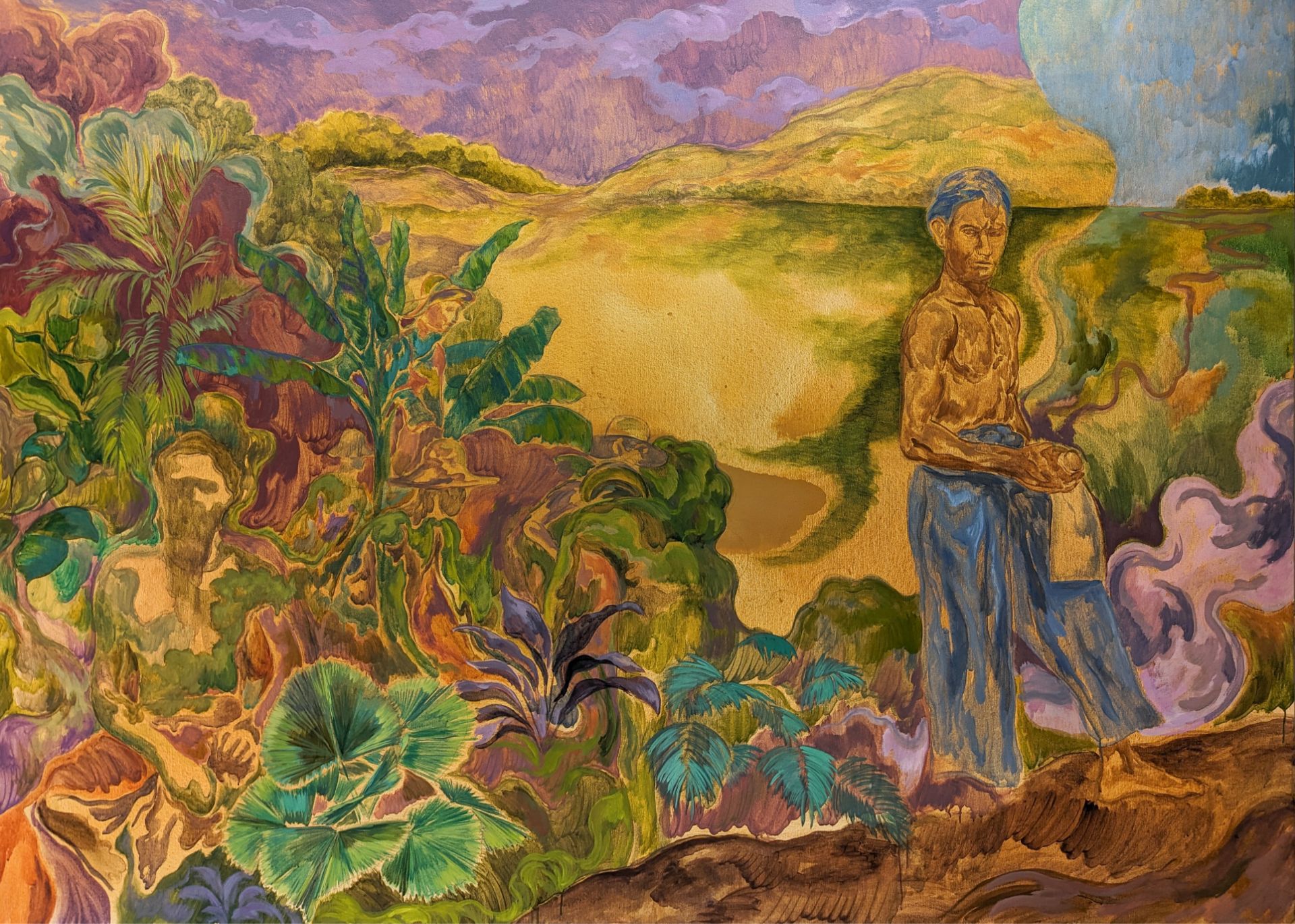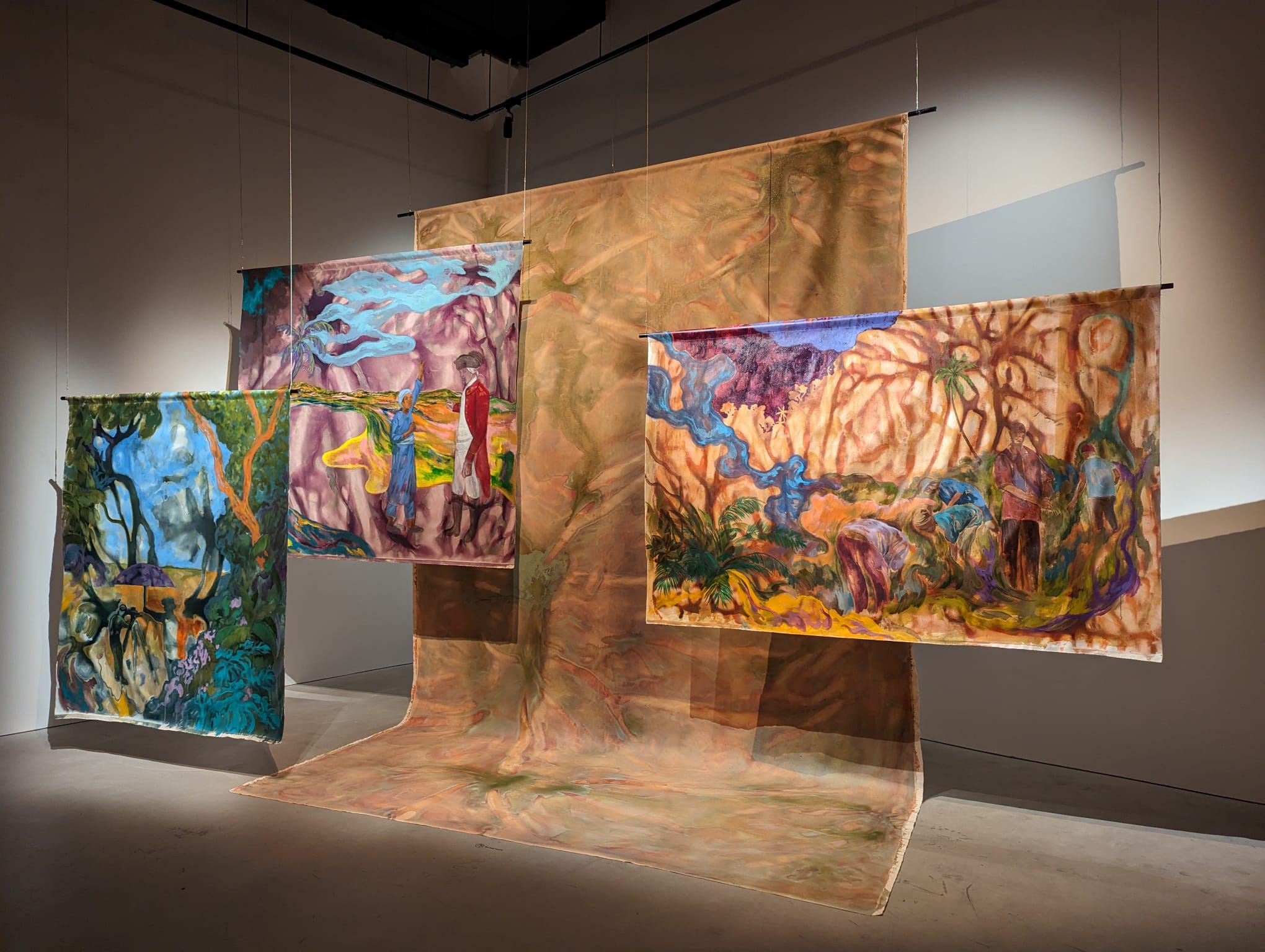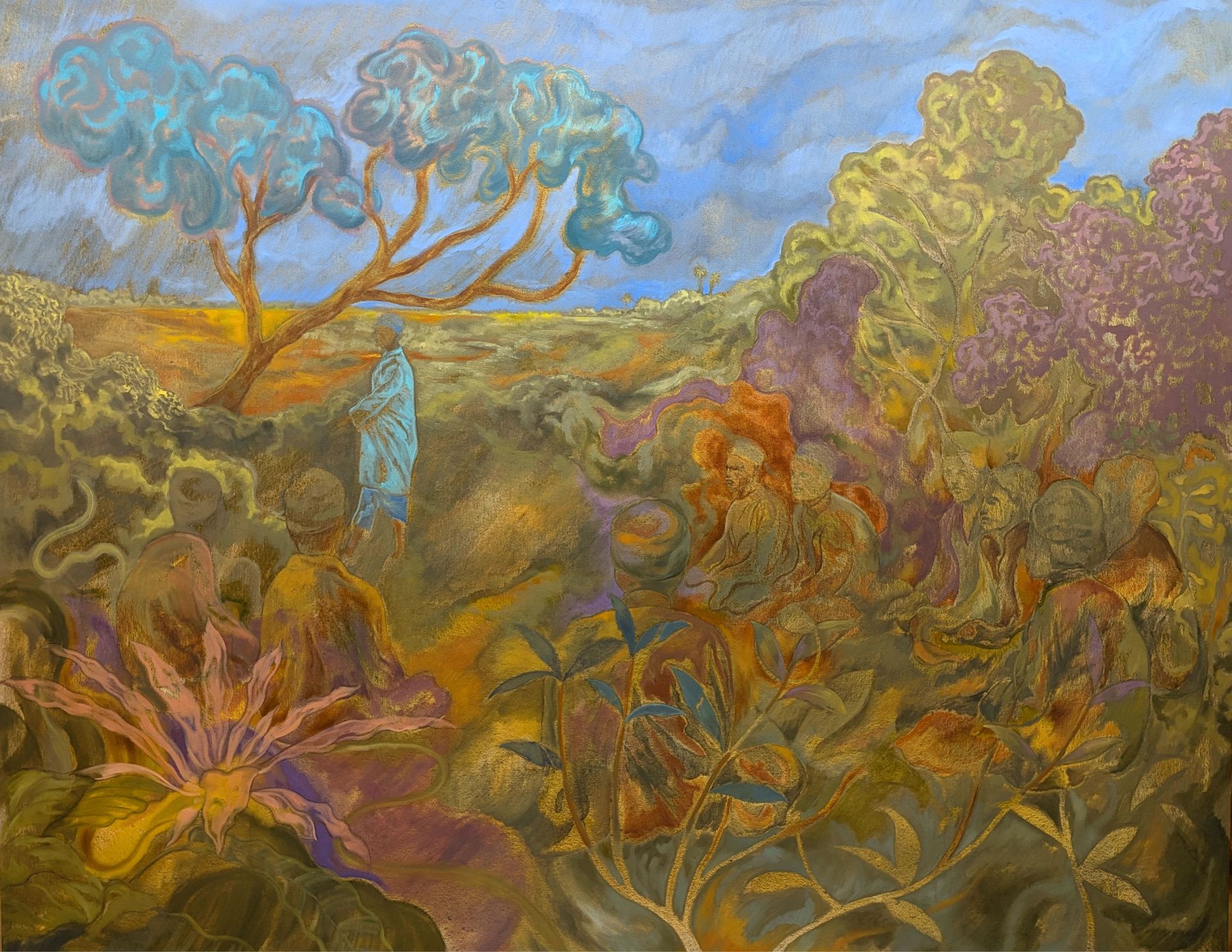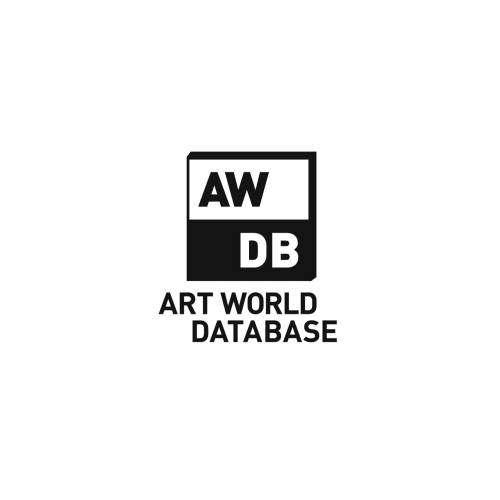
Throughout your work, and more than ever with your recent paintings, you use negative space, either in the landscape or in the figures which fade and become obscured. What do you hope this brings to your work?
I use this visual strategy of negative and positive space in my work to convey the paradoxical idea of presence in absence, or absence in presence. It’s a way for me to make reference to the influence of a particular being or element that can be absent in material reality, yet very much present in our consciousness and experience at the same time. I suppose there’s also the act of layering, concealing and revealing that comes with the use of negative and positive space, which I feel can be a metaphor for the coexistence of different realities.

Khairulddin Wahab, ‘Landscape Palimpsest’, 2023, acrylic on canvases, installed at Singapore Art Museum. Image courtesy of Cuturi Gallery and the artist
How do the figures in your paintings represent the historical relationships between humans and nature?
I see the figures in my paintings as actors in a play. For me, they embody, represent, and allude to the different ideas or narratives surrounding our historical relationship with nature. I believe we actively try to shape nature, and, by the same token, nature shapes us as well. So I use the figures to help drive a particular narrative I want to convey in my work.

Khairulddin Wahab, ‘Grand Conjuration’, 2024, acrylic and oil on canvas. Image courtesy of Cuturi Gallery and the artist
Can you discuss the choices behind your palette and the ways in which colours interact in your pieces?
I use colours to communicate and to create a specific mood in my paintings. I employ vibrant hues influenced by the impressionists and Les Nabis to represent nature, infusing my work with a sense of enchantment and otherworldliness. I think it’s essential to reinterpret the natural world in these colours to make viewers rethink and reimagine what they’re accustomed to seeing.

Khairulddin Wahab, ‘The Farthest Boundary’ and ‘Otherlands’, 2023, acrylic on canvases, installed at Asia Now 2023. Image courtesy of Cuturi Gallery and the artist
This will not be your first time showing work at Asia Now, having exhibited there in 2023. How has your work developed over the last year?
I suppose conceptually; I feel like the latest presentation at Asia Now might be the bookend to my series on spiritual landscapes. Over the last year, I have been doing a lot of research into other themes and areas of interest. Recently I’ve been researching water as a deadly and life-giving force in Southeast Asia and the maritime history of this region, in particular the ancient Malay polity of Srivijaya. In my painting practice, I have also begun experimenting with different mediums, including oils, which I haven’t used since my time in art school back in 2013.

Asia Now will take place 17-20 October 2024 at Monnaie de Paris in France. For more information, please click here.
INTERVIEW COURTESY OF ART WORLD DATABASE AND KHAIRULDDIN WAHAB, OCTOBER 2024.

